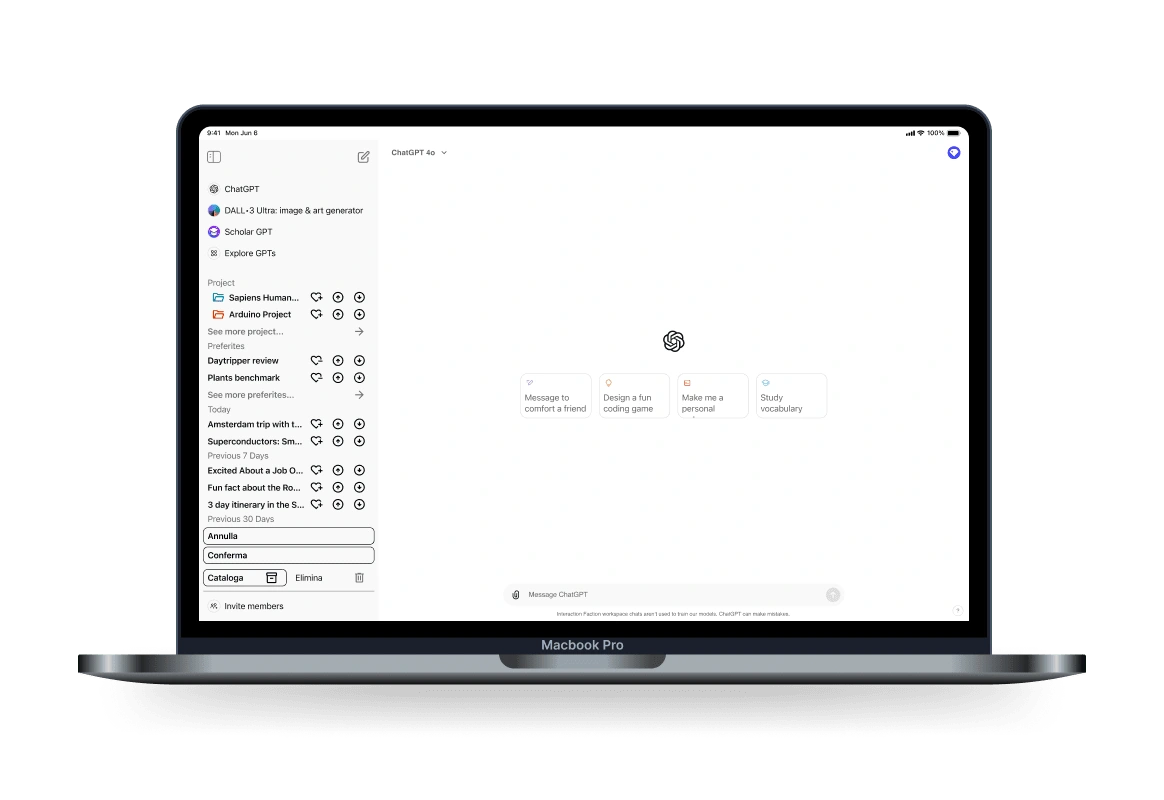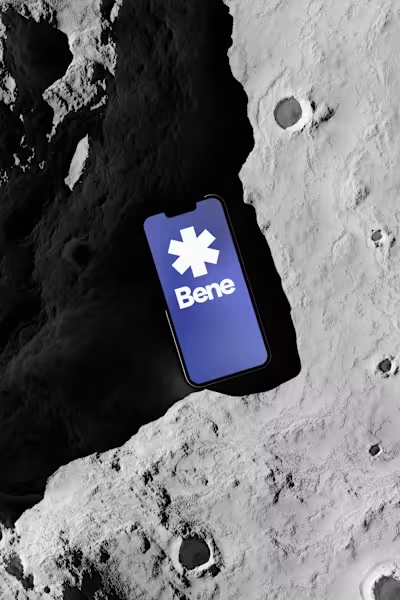ChatGPT History Management: the future of web research
ChatGPT History Management: the future of web research

Introduction
Artificial intelligence has become an essential tool in the daily lives of about 3 billion people (data updated as of October 2024), with a projected market value of 23 trillion euros by 2040. Among the hallmark technologies driving this transformation, ChatGPT stands out as a prime example of the evolution of advanced language models.
The challenge
The introduction of "agentive" interface could redefine how we access information, hinting at a gradual replacement of traditional browsers with intelligent interfaces. Within this context, a crucial question emerges: how will the interfaces of leading language models (LLMs) be designed to ensure an optimal user experience? New features in ChatGPT, such as web search and projects, highlight an urgent need to create solutions for storing and managing growing user-generated data.
Research goals
To improve the usability of OpenAI's current products, analyzing how users interact with these tools is essential. Web search and project creation activities generate many "search cards" that must be organized and managed. How can content organization be improved, taking inspiration from traditional browsers? Learning from the most popular browsers, we can think of focusing on a validation process for chat management.
Benchmark
Comparison with other existing solutions can provide insights for innovation:
Krea: This model, specialized in generating images and videos, features an agentive interface that highlights the prompts used and allows work sessions to be searched via keywords.
Bing: Integrates AI into the search engine, offering access—though somewhat cumbersome—to the Copilot interface. However, its history management is redundant, with duplicated searches between the browser and Copilot sessions.
Google: The world’s most widely used search browser offers advanced options to store and organize searches by topic or chronologically, along with the ability to create search lists for quick access.
The discovery
By implementing targeted features, the user experience can be significantly improved, making search management more straightforward and intuitive.
CatalogingThe lack of tools for organizing, favoriting, or bulk-deleting searches creates difficulties in managing information.
EfficiencyUsers expect reliable and relevant results, akin to those of traditional browsers.
The vision
By implementing a few targeted features, the user experience can be significantly improved. Search management becomes easier and more intuitive: no more searching.
Cataloging and Deletion Modes
Bulk Deletion: The introduction of checkboxes will allow users to select and delete multiple chats simultaneously.
Advanced Organization: A dedicated mode will enable sorting and saving the most relevant chats as favorites.

Accessibility and Usability
To ensure an inclusive experience, directional buttons (e.g., arrows) will be implemented as an alternative to drag handles. This solution will improve accessibility for a wide range of users.
Next steps
The evolution of artificial intelligence promises to redefine the way we interact with information and enhance our everyday experiences. Looking ahead, here are some key steps that could shape the evolution of AI interfaces: Artificial intelligence's evolution promises to redefine how
Intelligent Cataloging
Intelligent cataloging AI models evolve, and predictive machine learning systems can manage cataloging and data storage, suggesting personalized structures based on user needs. Introducing custom tags in chats would further streamline the search process, adding an extra dimension to information management.
Efficiency Improvements
The search experience could be optimized with the introduction of proactive suggestion systems. AI could identify and suggest related content or conversations based on user activity and preferences, enabling faster and more effective data retrieval.
Collaborative Mode
The introduction of collaborative modes in AI interfaces would be an important step. Particularly in the context of projects, this functionality would allow multiple users to collaborate and organise research.
Quali potrebbero essere i prossimi passi?
Catalogazione: Con il progresso dei modelli AI le possibilità di implementare attraverso l'integrazione di sistemi di apprendimento automatico la gestione predettia, in modo che suggeriscano strutture di catalogazione e archiviazione personalizzate. Inoltre attraverso l'introduzione di tag personalizzate alle chat.
Efficienza: Il miglioramento dell'esperienza di ricerca poptrebbe prevedere l'implementazione di un sistema che suggerisca chat correlate o rilevanti basate sulle attività dell'utente.:
Modalità collaborativa: Introdurre la possibilità di condividere e collaborare su ricerche salvate o organizzate con altri utenti.
Quali potrebbero essere i prossimi passi?
Catalogazione: Con il progresso dei modelli AI le possibilità di implementare attraverso l'integrazione di sistemi di apprendimento automatico la gestione predettia, in modo che suggeriscano strutture di catalogazione e archiviazione personalizzate. Inoltre attraverso l'introduzione di tag personalizzate alle chat.
Efficienza: Il miglioramento dell'esperienza di ricerca poptrebbe prevedere l'implementazione di un sistema che suggerisca chat correlate o rilevanti basate sulle attività dell'utente.:
Modalità collaborativa: Introdurre la possibilità di condividere e collaborare su ricerche salvate o organizzate con altri utenti.
Conclusion
The future of artificial intelligence and agent-based interfaces is opening up new ways of managing information and interacting with data. Tools such as ChatGPT and advanced language models have already proven their value in delivering fast, accurate, and highly personalized responses. However, there are many avenues to explore to further optimize the user experience: implementing advanced features such as intelligent cataloging, proactive search, and user collaboration can turn current limitations into strengths. In the future, AI interfaces will need to evolve not only to meet user needs but also to anticipate them, fostering smoother, more intuitive, and collaborative interactions.
Like this project
Posted Mar 28, 2025
Michele Palmiero, passionate UX designer with experience in designing accessible and impactful services. Skilled in project organization, problem-solving, and …
Likes
0
Views
6
Timeline
Jan 1, 2025 - Jan 7, 2025






